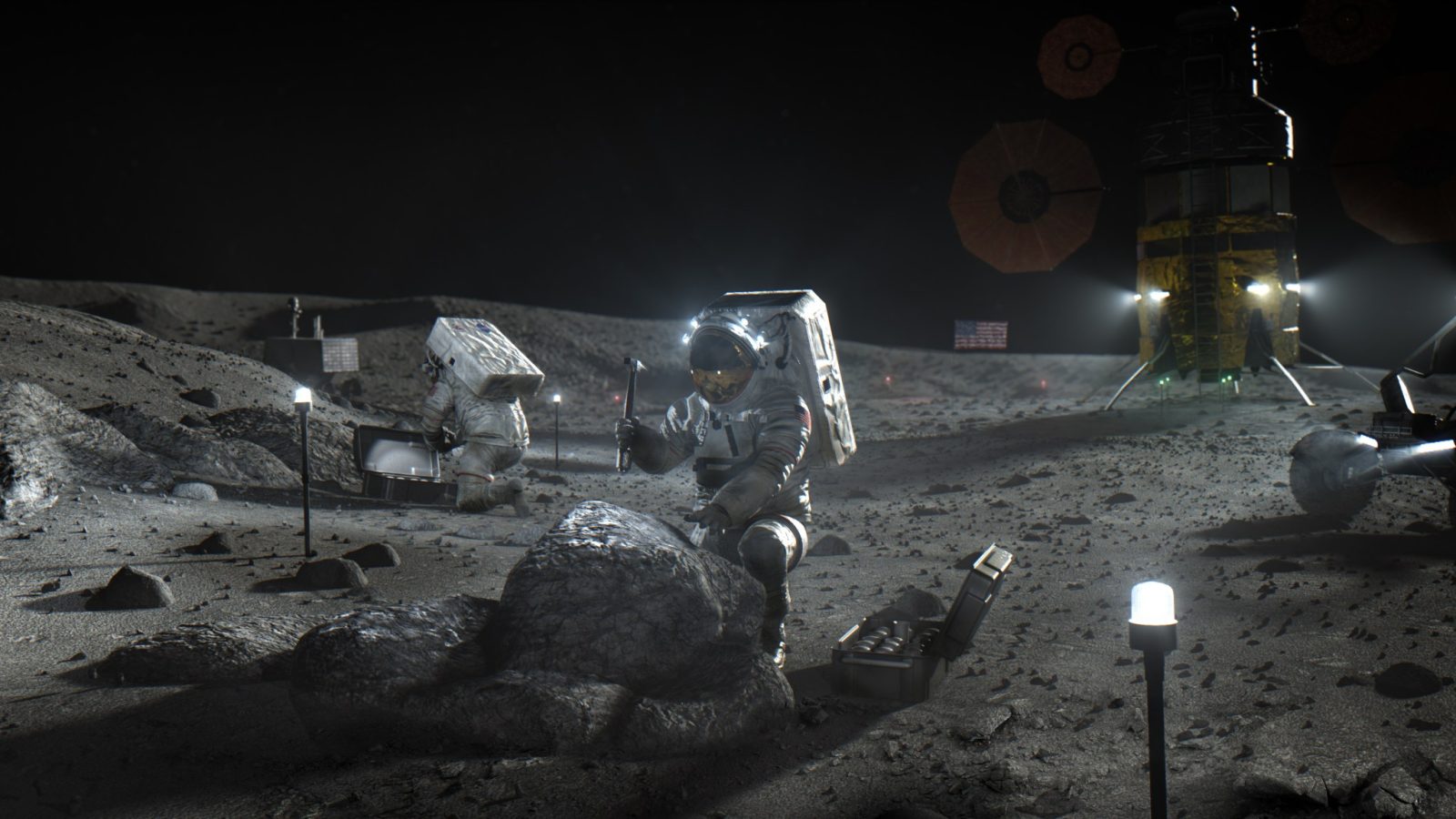
NASA has unveiled the first set of scientific instruments selected for deployment by astronauts on the Moon’s surface during the Artemis 3 mission. This endeavor aims to enhance our understanding of the Moon, aiding preparations for future crewed missions to Mars.
The Artemis 3 mission, which will see astronauts setting foot on the lunar South Pole, is a step toward sustainable human presence beyond Earth. The instruments chosen for this mission are expected to gather invaluable data about the lunar environment, its interior, and the viability of prolonged human habitation on the Moon.
Transformative lunar science instruments
The selected payloads include three cutting-edge instruments. The Lunar Environment Monitoring Station (LEMS), spearheaded by Dr. Mehdi Benna from the University of Maryland, Baltimore County, is a sophisticated seismometer suite set to monitor moonquakes and provide insights into the Moon’s structural composition. LEMS’ long-term monitoring capabilities could eventually integrate it into a global lunar geophysical network.
Next, the Lunar Effects on Agricultural Flora (LEAF) experiment, led by Christine Escobar of Space Lab Technologies, LLC, in Boulder, Colorado, is designed to explore the impact of the lunar environment on space crops. This study aims to observe plant photosynthesis, growth, and stress responses under the unique conditions of space radiation and partial gravity, offering vital data for future lunar agriculture and life support systems.
The third instrument, the Lunar Dielectric Analyzer (LDA), led by Dr. Hideaki Miyamoto of the University of Tokyo with support from the Japan Aerospace Exploration Agency, is expected to assess the lunar regolith’s electrical properties. This research is crucial for identifying lunar volatiles like ice, offering clues to the Moon’s subsurface structure and potential resources for human explorers.
Join our Discord Server: Join the community with forums and chatrooms about space!
A new era of exploration
NASA Deputy Administrator Pam Melroy emphasized the mission’s significance, stating, “Artemis marks a bold new era of exploration, where human presence amplifies scientific discovery.” in an agency statement. She continued, “with these innovative instruments stationed on the Moon’s surface, we’re embarking on a transformative journey that will kick-start the ability to conduct human-machine teaming an entirely new way of doing science.”
The Artemis 3 mission, set to launch no earlier than late 2026, represents the first crewed lunar landing in over 50 years and targets one of the Moon’s most intriguing regions, its South Pole. The area’s unique characteristics, including permanently shadowed regions and some of the Moon’s oldest materials, promise to unlock secrets about lunar history and broader planetary processes.
NASA’s Artemis program aims not only to return humans to the Moon but also to establish a sustainable presence there as a precursor to human missions to Mars. By landing the first woman, the first person of color, and its first international partner astronaut on the Moon, NASA sets the stage for a new era of inclusive and collaborative space exploration.
FTC: We use income earning auto affiliate links. More.




Comments